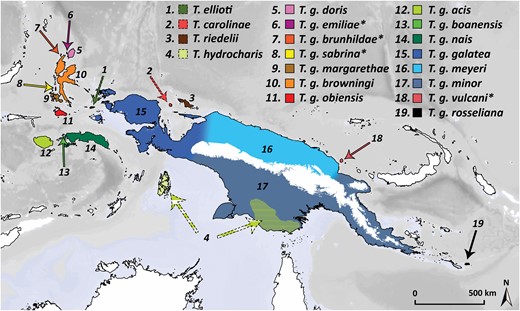Dalton, D.L., L.J. Nupen, M. Mwale, C. Pretorius, A.S. Kropff, B.A. Monchusi, K. Labuschagne, and S.T. Osinubi (2022)
First steps to success: identification of divergence among the northern and the southern lineages of African Pygmy Kingfisher (Ispidina picta) (Coraciiformes: Alcedinidae)
Journal of Ornithology (advance online publication)
doi: 10.1007/s10336-022-01996-z
Currently little is known about intra-African bird migrants. Migratory connectivity between populations may be affected by past climatic fluctuations as well as contemporary threats that affect habitat connectivity resulting in genetic differentiation. Here, integrated molecular and morphological data was used to examine genetic diversity, elucidate patterns of differentiation and assess evolutionary history of the African Pygmy Kingfisher (
Ispidina picta). Three subspecies have been described namely:
I. p. picta,
I. p. ferrugina and
I. p. natalensis. Here, molecular analysis was performed for two subspecies;
I. p. natalensis (South Africa) and
I. p. picta (Uganda, Ghana and Nigeria) using mitochondrial and nuclear genes. Our results provided evidence of two genetic lineages corresponding to subspecies designation:
I. p. natalensis, and
I. p. picta that diverged 1.74 Mya ago in the Pleistocene. Lack of differentiation was observed within the two subspecies indicating that connectivity between the populations has been maintained. Morphometric variation identified differences between the subspecies and further identified sexual dimorphism within
I. p. natalensis. This study provides for the first time a genetic and morphometric appraisal of African Pygmy Kingfishers. We recommend that this or similar approaches be applied to other widespread African bird species that are often overlooked in a global conservation context.








